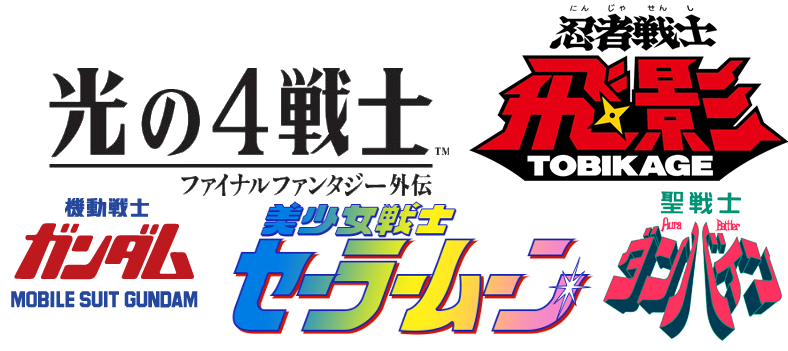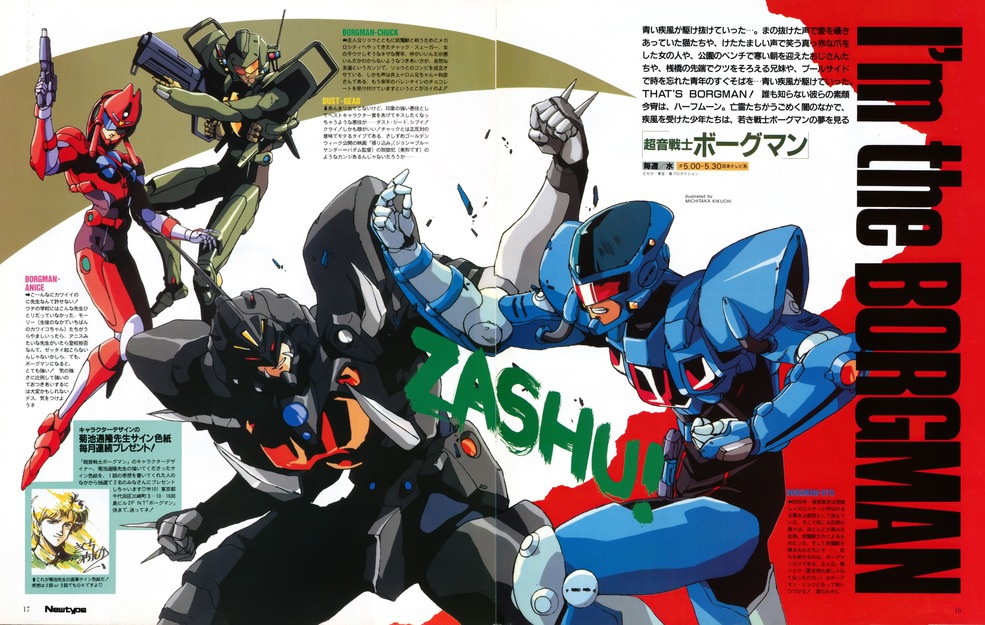As we discussed earlier, the term senshi as used in Sailor Moon‘s title is the cause of quite a bit confusion due to the change from the traditional Soldier and being re-interpreted as Guardian in recent years. While doing all the research into the background on the name, though, I ran across multiple examples of the use of senshi pre-dating Sailor Moon (which isn’t too surprising) in a form rather similar to that in Sailor Moon, which gives us more of a sense of the context in which the title existed and how the title Bishoujo Senshi Sailor Moon fit into Japanese public consciousness in the early 1990s.
It turns out that during the early- to mid-1970s, there was a great deal of manga, anime, and live action series bearing the senshi moniker. For those who lived through the late 80s and through the 90s in the US, you may be familiar with the popularity of the term “ninja” almost anywhere you looked, in comics, cartoons, tv shows, and movies. As the Vietnam war ramped up and drew attention around the globe, soldiers and the military came into the limelight and even pacifist nations like Japan were pulled into the build-up. Unfortunately, the traditional term for a military soldier, heishi (兵士) was, and is today, heavily stigmitized in the post-war era. Even today, the term used when applied to the Japanese military nearly exclusively refers to the combatants in WWII and prior to that.
The term of senshi, however, carried with it no such stigma and was more closer tied to the older samurai warriors. So what can we learn about the context of senshi leading up to Sailor Moon? Well, as it turns out, there’s a richer story than you’d initially believe!
One of the earliest examples of the resurgence of senshi in media dates back to 1972 with the Warrior of Love Rainbowman.1 Slightly more significant is that this series aired on what was then known as Nihon Educational Television (NET), or modern-day TV Asahi2 (the same station which produced and aired Sailor Moon). This was followed up the next year with another program titled Warrior of Light Diamond Eye,3 which was also co-produced by and aired on NET.
Moving forward to 1979, we have Mobile Suit Gundam, which mysteriously omits the senshi translation from the official English title entirely. The proper Japanese title is Kidou Senshi Gundam (機動戦士ガンダム) which is closer to Mobile Warrior [Machine] Gundam. Once again of interest here is that the tv anime was co-produced and aired by Nayoga Broadcasting Network, which was a member of the NET network with TV Asahi as a major investor (6.25% shareholder as of 1978).4
From here on out, there are actually a huge amount of series carrying the title of senshi throughout the the 1970s and 1980s. From 1972 to 1989, in fact, there are eighteen different series aired on Japanese television carrying the senshi title if you count all of the Gundam and the Rainbowman live action and anime as separate series, and thirteen unique series if you count all of the Gundam shows together.5
Last but not least (at least with respect to the lead up to the creation of Sailor Moon), is Sonic Soldier Borgman,6 an anime series which aired on Japanese TV in 1988 and had a follow-up movie and OVA in 1990 and 1993 respectively. This also neatly drives home the point of the then-established title pattern of Descriptive Noun + Senshi + Name. 7
| Title (Japanese) | Title (Romanized) | Year |
| 愛の戦士レインボーマン | Ai no Senshi Rainbowman | 1972 |
| 光の戦士ダイヤモンド・アイ | Hikari no Senshi Diamond Eye | 1973 |
| 氷河戦士ガイスラッガー | Hyouga Senshi Guyslagger | 1977 |
| 機動戦士ガンダム | Kidou Senshi Gundam | 1979 |
| 宇宙戦士バルディオス | Uchuu Senshi Baldios | 1980 |
| とんでも戦士ムテキング | Tondemonai Senshi Mutekingu | 1980 |
| 黄金戦士ゴールドライタン | Ougon Senshi Lightan | 1981 |
| 聖戦士ダンバイン | Sei Senshi Dunbine | 1983 |
| ビデオ戦士レザリオン | Video Senshi Laserion | 1984 |
| 夢戦士ウィングマン | Yumi Senshi Ultraman | 1984 |
| 忍者戦士赤影 | Ninja Senshi Akakage | 1985 |
| 時空戦士スピルバン | Jikuu Senshi Spielban | 1986 |
| 超音戦士ボーグマン | Chou’on Senshi Borgman | 1988 |
| レスラー軍団銀河編聖戦士ロビンJr. | Wrestler Gundan Ginga-hen Sei Senshi Robin Jr. | 1989 |
As you can see, the senshi name had been alive and strong in Japan leading up to the Sailor Moon series, and in fact, the title format itself was already well established and Sailor Moon itself is simply one in a long line of senshi series, making the title itself, in reality, something of an homage to all the series which came before it, and which gave the viewers and readers something of an expectation of what they were about to see. That’s not to say that Sailor Moon merely ripped off the themes that came before it, since it in fact is one of the first real senshi series with female leads and marketed to young girls.
Not too shabby for a then 20-year-old genre, I’d say!
References:
- There was a live action show and manga which ran concurrently from 1972 to 1973 and an anime series in 1982 to 1983. See Warrior of Love Rainbowman (Wikipedia) ↩
- Though originally a channel focused on education, they slowly moved into entertainment programming and finally settled on the TV Asahi name in 1977. See TV Asahi: History (Wikipedia) ↩
- See Warrior of Light Diamond Eye ↩
- See Nagoya Broadcasting Network (Wikipedia) ↩
- See this list of Showa Children’s Shows ↩
- See Sonic Soldier Borgman (Wikipedia) ↩
- Of the 13 senshi series in the aforementioned list, all 18 of them follow this pattern. ↩



